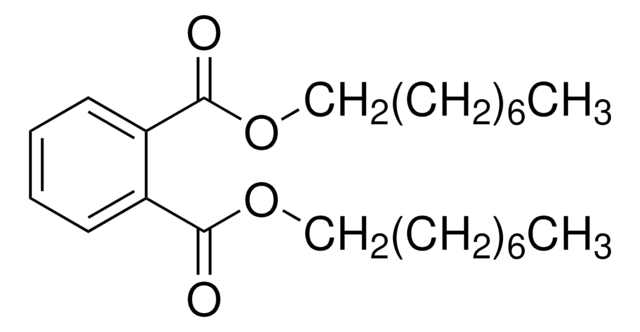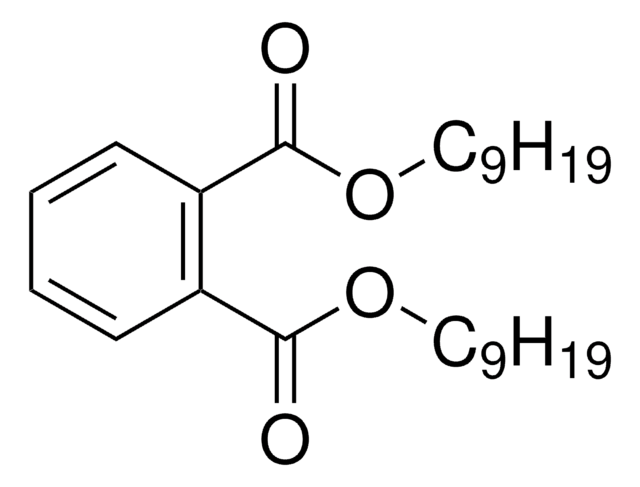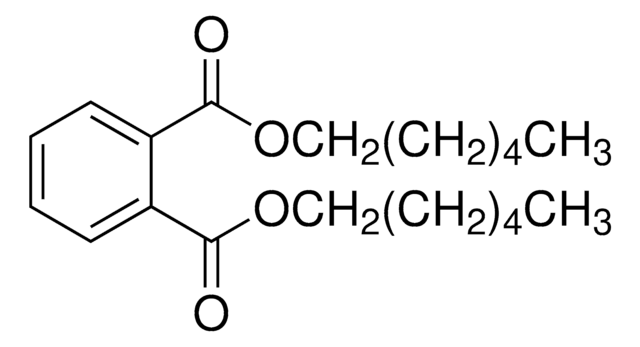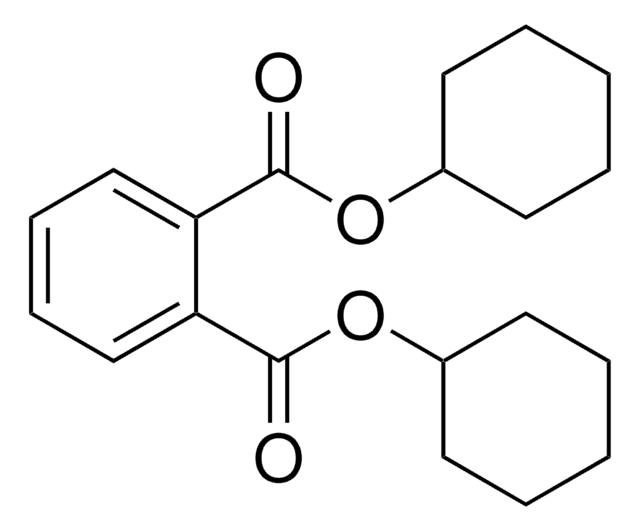80153
Di-n-octyl phthalate
≥98.0% (GC)
Sinonimo/i:
Phthalic acid di-n-octyl ester
About This Item
Prodotti consigliati
Livello qualitativo
Saggio
≥98.0% (GC)
Stato
liquid
Indice di rifrazione
n20/D 1.485
Indice di acido
≤3
Densità
0.980 g/mL at 20 °C (lit.)
Gruppo funzionale
ester
Stringa SMILE
CCCCCCCCOC(=O)c1ccccc1C(=O)OCCCCCCCC
InChI
1S/C24H38O4/c1-3-5-7-9-11-15-19-27-23(25)21-17-13-14-18-22(21)24(26)28-20-16-12-10-8-6-4-2/h13-14,17-18H,3-12,15-16,19-20H2,1-2H3
MQIUGAXCHLFZKX-UHFFFAOYSA-N
Cerchi prodotti simili? Visita Guida al confronto tra prodotti
Descrizione generale
Applicazioni
- Unified BARGE Method for Phthalate Migration: A simplified unified BARGE method has been proposed to assess the migration of phthalate esters from ingested PVC consumer products. This study focuses on the migration behaviors of phthalates like Di-n-octyl phthalate, aiding in regulatory assessments and consumer safety evaluations (Mohamed et al., 2023).
- ECTFE Porous Membrane for Dehumidification: The development of an ECTFE porous membrane for dehumidification of gaseous streams through a membrane condenser introduces a novel application of membrane technology, potentially incorporating Di-n-octyl phthalate as a process agent, enhancing industrial gas separation and purification processes (Pan et al., 2022).
Indicazioni di pericolo
Consigli di prudenza
Classi di pericolo
Aquatic Chronic 4
Codice della classe di stoccaggio
10 - Combustible liquids
Classe di pericolosità dell'acqua (WGK)
WGK 1
Punto d’infiammabilità (°F)
228.2 °F - closed cup
Punto d’infiammabilità (°C)
109.0 °C - closed cup
Dispositivi di protezione individuale
Eyeshields, Gloves
Scegli una delle versioni più recenti:
Possiedi già questo prodotto?
I documenti relativi ai prodotti acquistati recentemente sono disponibili nell’Archivio dei documenti.
I clienti hanno visto anche
Il team dei nostri ricercatori vanta grande esperienza in tutte le aree della ricerca quali Life Science, scienza dei materiali, sintesi chimica, cromatografia, discipline analitiche, ecc..
Contatta l'Assistenza Tecnica.









